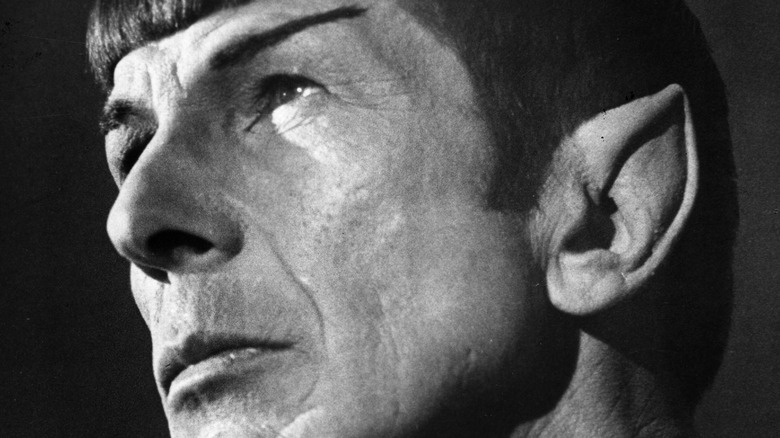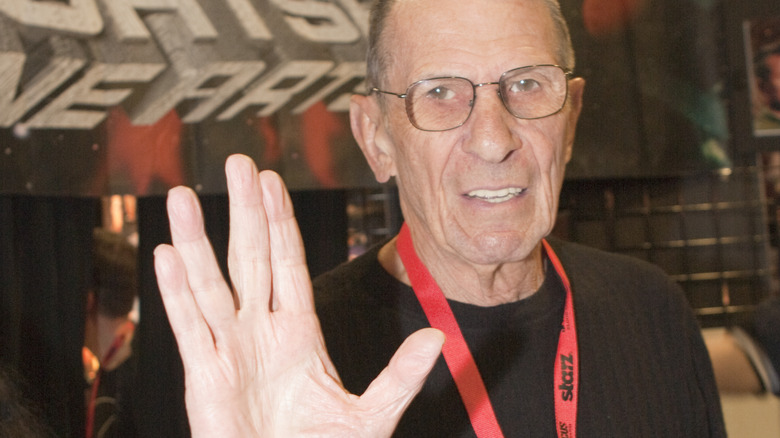How Leonard Nimoy's Roots Inspired The Vulcan Salute
The Vulcan salute is instantly recognizable to most people, even if they're not "Star Trek" fans, consisting of an open palm with the pinky and ring fingers pressed together on one side of the "V," with the middle and pointer making up the other side, the thumb extended on its own. According to a 2012 entry from the official Star Trek blog, the gesture was first performed by the character of Mr. Spock, played by actor Leonard Nimoy, on the episode "Amok Time," which premiered on television in 1967. The episode takes place on the planet Vulcan, where Spock uses the gesture to greet fellow Vulcan T'Pau, played by Celia Lovesky, probably little knowing the importance the gesture would have to "Star Trek" lore and pop culture history in general.
Nimoy explained in 2012 that he had come up with his character's gesture himself: "The idea came when I saw the way Joe [director Joseph Pevney] was staging the scene. He had me approach T'Pau and I felt a greeting gesture was called for. So I suggested it to Joe, who accepted it immediately. Gene [Roddenberry, the creator of "Star Trek"] was not involved." Nimoy noted in his 1995 autobiography "I Am Spock," quoted by the website Quartz in 2015 on the occasion of Nimoy's death at the age of 83, that he had adapted the symbol from Orthodox Judaism, specifically a hand symbol the Konahim, or priests, make as they bless the congregation during High Holiday services "with thumbs outstretched and the middle and ring fingers parted so that each hand forms two vees."
The Vulcan salute copies an Orthodox Jewish gesture with special meaning
Nimoy wrote for the Star Trek blog that he had grown up in Boston's West End neighborhood, which was home to a large number of immigrants. He attended a local Orthodox Jewish synagogue with his family. They were particularly observant of the Jewish High Holidays. His father once instructed young Nimoy not to look at the priests as they prepared to say the benediction that included the gesture, as "it is believed that during this prayer, the 'Shekhina,' the feminine aspect of God comes into the temple to bless the congregation" and the accompanying light could be damaging. Some people traditionally close their eyes to protect them. Nimoy secretly peeked and recalled that upon seeing "the split-fingered gesture of these men ... I was entranced. I learned to do it simply because it seemed so magical." Around 25 years later he introduced a version of the hand sign as the Vulcan salute, accompanied with its own blessing: "Live long and prosper."
Writer Lindsay Traves explored the history of the Vulcan salute for the Star Trek blog in 2019 in honor of Jewish History Month. Rabbi Howard Morrison of Toronto's Beth Emeth Synagogue explained that the gesture, made with both hands with thumbs connected, forms the Hebrew letter Shin, which is the first letter of Shaddai, one of the names for God in the Torah. The gesture didn't come easily to all "Star Trek" actors; per the IMDb, Celia Lovsky had to have her fingers taped together in order for T'Pau to return Spock's greeting.

